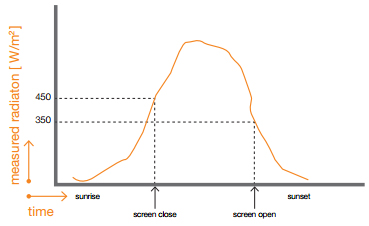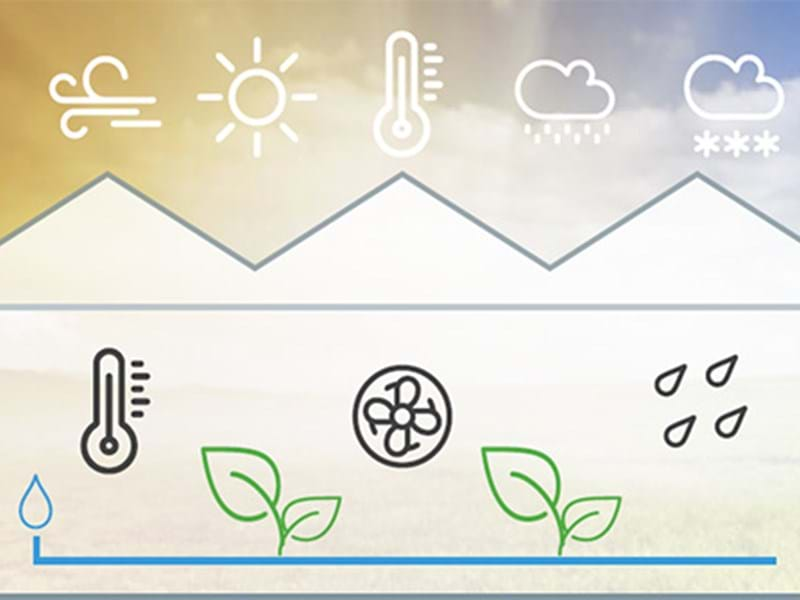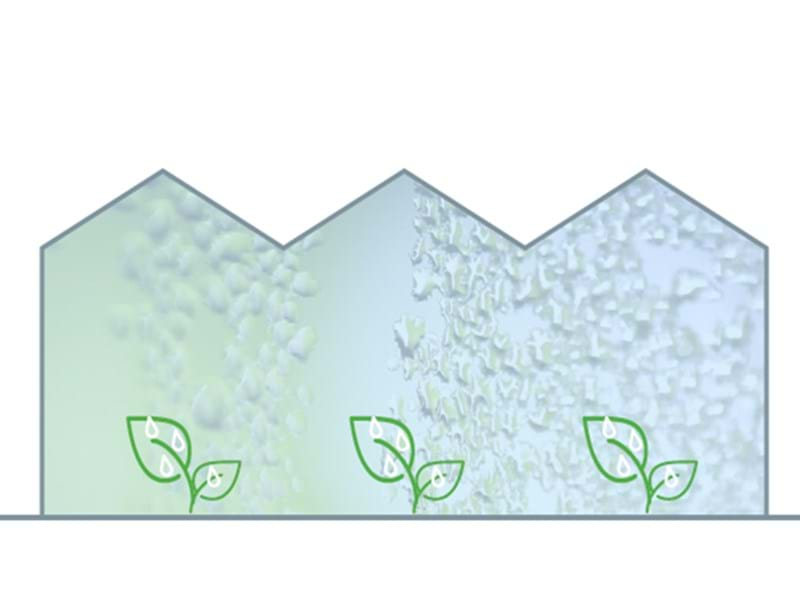Light - A blessing and a curse
Light Management
The sun, a source of light and warmth, is every grower’s best friend. But when radiation is too high, air and crop temperatures rise to extreme levels – it’s vital to control how much light is entering your greenhouse.
Plants need light, artificial light or sunlight, and carbon dioxide in order to be able to perform photosynthesis vital to their growth. But they need just the right amount of light. Too little and their growth will be inhibited, yielding a poor crop. Too much and the plants will suffer, also reducing the yield.

Too much light:
Burnt leaves and fruits

Too little light:
Slowed growth
The solution is to vary the amount of light entering the cultivation area. To fit grower's requirements in different climate zones and for different kinds of crops, Svensson's screen range offer shading levels from 15 to 85%, which means we’ve got you covered.
When to shade
Let the morning light in, provide shade during the hottest part of the day, and then open the screen to let in the late afternoon sun. Remember to close the screen at night to get the right temperature.
Many crops require shading during spring, summer, and fall. The main criteria for closing the screen should be the radiation level and/or temperature. The exact levels are determined by the sensitivity of the crop. A further criterion to be considered is a sudden change in the weather; going from cool and rainy to warm and sunny for example, it might be better to reduce solar radiation at a lower level - closing the screen sooner. Keep in mind that young plants always need more shading!
When using a closed structured energy saving and shading screen, the screen should be 80-90% closed, leaving a gap for sufficient ventilation. With an open structured shading screen, the screen can be closed 100%. The open strips in the screen will provide sufficient ventilation.
In the example on the right, the screen is closed when the solar radiation reaches 450 W/m2 and re-opened in the afternoon when radiation drops below 350 W/m2.
A climate computer with a delay time setting helps prevent sporadic opening and closing.

Reduce radiation – and temperature
Our screens are designed to reduce radiation, resulting in considerably lower crop and air temperatures. What’s special is that our screens don’t absorb radiation, but reflect it upwards. Svensson Harmony screens not only provide shade but also light diffusion, leading to a quicker growth and better plant quality.
Create complete darkness
There are endless of variations in how light in greenhouses can be manipulated and altered to fit plant growth patterns. For day length sensitive plants, for example, flowering when they get less than twelve hours of daylight per day, you need a solution to create darkness but without making the greenhouse too hot or too moist.
Another example is to use blackout screens when using supplemental lights. Then the surrounded environment and neighborhood is not affected by light pollution during the night.


